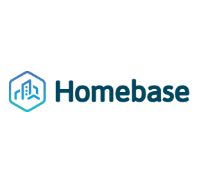Comverge: Smart Products and Services Will Make Energy Solutions More Affordable to Deliver
 Steve Hambric, VP, Strategic Sales and Operations at Comverge, Inc., answers several industry questions about issues that are currently affecting the energy management market:
Steve Hambric, VP, Strategic Sales and Operations at Comverge, Inc., answers several industry questions about issues that are currently affecting the energy management market:
What do you think is the most challenging issue for your company as it relates to the residential energy management market?
2-way devices moving demand response up the resource stack at utilities. There are organizational and cultural barriers slowing our progress, but it’s an inevitable outcome. For example we’ve proven our 2-way solutions as reliable, responsive resources, including as fast responding Synchronization Reserve resource at PJM.
What are the major challenges that your business must address in 2015? in 2020?
In 2015, we need utilities to move beyond experiments using third party thermostats that aren’t delivering real results and focus on deploying programs using third-party devices that deliver cost-effective, measurable benefit at scale. These results will prove the value of 3rd party devices and drive greater efficiencies. 2020, we need to advance policies that properly align incentive so we achieve more of our demand side management potential.
What are the major barriers impacting consumer adoption of energy related products and services?
Regulatory and policy. This includes the uncertainty caused by FERC 745, and many State Commissions unwilling or unable to incentivize utilities to invest in cost-saving demand side management programs.
What are the biggest opportunities for the smart home industry to work with the electricity industry?
We need to close the gap between the expectations of 3rd party device suppliers, and energy and capacity markets. Right now the utilities forced to absorb that difference in 3rd party pilots. For 3rd party devices to yield real benefits at scale, those suppliers must modify their programs to better align with energy and capacity market needs.
What impact will smart products and smart home services have on consumer adoption of energy solutions?
By creating an increasing pool of customers with connected devices already in the home, smart products and services will make energy solutions more affordable to deliver, and increase the scale of benefits. Including customers such as low-income and renters who would typically not be good candidates for a device-enabled program.
Steve Hambric will be speaking on the panel “Integrating Demand Response into the Smart Home” at 4:00 PM during Smart Energy Summit in Austin, TX, February 17, 2015. Other panel speakers include representatives from Electric Reliability Council of Texas (ERCOT), EnergyHub, Integral Analytics, Inc., and Southern California Edison (SCE).
For more information on Smart Energy Summit speakers, sessions, or topics, visit www.ses2015.com. Registration is still open!
Next: Insights from U.S. Department of Energy: Entertainment and Convenience Are Drivers for Consumer Electronic Purchases
Previous: WSI Joins Smart Energy Summit in Austin, February 16-18




 Steve Hambric, VP, Strategic Sales and Operations at Comverge, Inc., answers several industry questions about issues that are currently affecting the energy management market:
Steve Hambric, VP, Strategic Sales and Operations at Comverge, Inc., answers several industry questions about issues that are currently affecting the energy management market:











